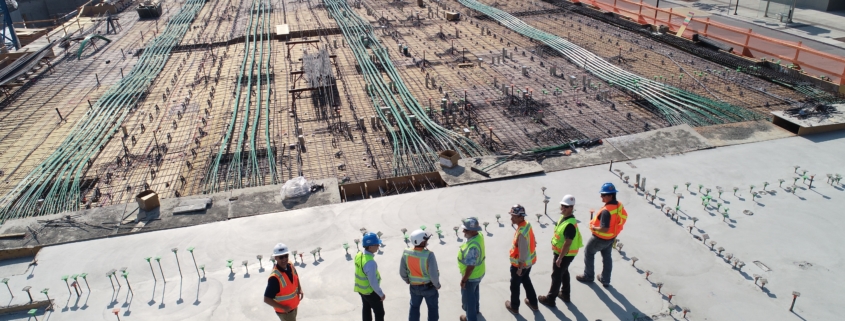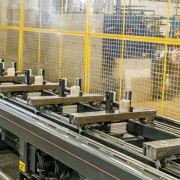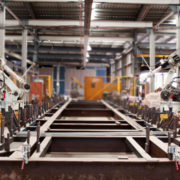BIM and the Future of Data Centres
Commercial building is a complex and expensive undertaking, with extensive planning, designing and documentation involved. As these technical and compliance requirements have become more demanding, Building Information Modelling (BIM) software has become a critical digital tool in the architecture, engineering, and construction industries. BIM is a process for creating and managing information for a building project. It can provide a digital representation of a building across its lifecycle, from planning and design to construction, operations and even decommissioning.
The New Zealand government sees BIM as a game changer in lifting the productivity of New Zealand’s building and construction sector. BIM is currently being used by 70% of industry professionals in New Zealand, and a ‘Level 2’ BIM criteria is mandated for industry professionals in many countries around the world.
With demand for cloud-based computing rapidly increasing, large amounts of capital are being invested into New Zealand’s technological capabilities, including building a growing number of data centres. Hyperscale data centres are being constructed all over the country, with the latest in Southland projected to cost $1 billion. It is, therefore, critical to ensure that the coordination, communication, and risk mitigation of these ventures is carefully managed, to maximise profitability and reduce risk. Construction in New Zealand currently accounts for 6.7% of GDP or $15 billion, and it is disappointing to see that poor productivity accounts for 20% of that, that is $1.2 billion wasted annually in the commercial building sector.
What is BIM?
Large scale construction involves the interaction of multiple industry professionals, each contributing to different parts of a project, at different stages and with different perspectives. Traditionally, this might have been achieved by engaging designers, builders and building operators in a linear fashion. However, with Building Information Modelling (BIM) software, it is possible for all construction information to be hosted together in a multi-dimensional environment. This BIM environment allows contributors to communicate and collaborate on the same information in real time. BIM also incorporates a growing number of tools to visualise, quantify, and automate parts of design, coordination, and data analysis.
BIM allows for a 3D model of the project to be built virtually, including every stage and part of the design process. It utilises the fourth dimension, time, where the plan can show the different stages of the project including, for example, the mechanical, electrical, and plumbing phases and how they fit together. BIM can also include health and safety and warranty in the model building plans.
It is important to understand that BIM isn’t a simple program you can buy and get your staff to model a building on. It’s a platform to create, collaborate, integrate, and plan the entire process.
What can it do?
BIM can offer improvements to the construction process in several ways. It allows for early detection of problems, due to its 3D model nature, it enables staff to add all the phases of a project together and see if there are any clashes. It also facilitates improved scheduling through information availability and can increase worker efficiency and safety. The use of the BIM platform allows for collaboration of a new level between the architects, engineers, and construction workers. It has been shown to decrease the number of ‘Requests For Information’ (RFIs) between the stakeholders in the construction phase (down 49%), reduce rejected RFIs (by 41%) and result in fewer RFIs with outdated documents (down by 27%). BIM allows the architects, engineers, and construction workers to work collaboratively to produce and view documents relating to every aspect of the project plan.
Using BIM in Data Centre Construction
Data centres are difficult construction projects, with unique requirements for heating, power consumption and security. By utilising BIM software, you can model computation fluid dynamics (CFD) or the air flow of the project, and map out which areas will be at risk of overheating. BIM can also calculate the electrical-systems power calculations of how much energy you will require to keep the building running. With the new data centre in Southland expected to run at 60MW, it is advantageous to be able to map out heat sources and electrical issues before the construction phase has even begun.
While most industry professionals use BIM from the design phase to the construction phase of the project, only 25% use BIM for the operations of the project. With razor thin margins, BIM can mitigate many of the hazards associated with the ongoing operation of a data centre. Because of their massive power requirements and high automation levels, data centres require large amounts of planning around ongoing costs and energy efficiency. BIM can support all these considerations.
If you are interested in learning more about BIM and how to use the software, there are a few education and training facilities around New Zealand that offer courses and certificates. Although it is highly recommended you hold a previous degree, or diploma, in the construction or engineering fields.
BIM is a sector that is growing rapidly, and it is important to stay up to date with new trends and software that will allow you to maximise profits and minimise wastage. Whilst BIM is currently not mandated in New Zealand, it is anticipated that this may change soon. With hyper data centres being constructed all over New Zealand, the need for BIM utilisation is of paramount importance to these projects. These data centres give an exciting opportunity for the New Zealand construction industry to evolve into a more collaborative, cloud based and sustainable industry.
Here at Technical Recruitment Solutions, we have provided recruitment services in New Zealand’s construction sector since 1997. We have evolved from paper-based CVs being posted and faxed to companies, to our current sophisticated CRM Programs. What hasn’t changed is our passion for the built environment and our ability to connect your career goals with the right opportunities. If you are interested in hearing more about the benefits of BIM software, or are a BIM software expert, get in touch.

















Leave a Reply
Want to join the discussion?Feel free to contribute!